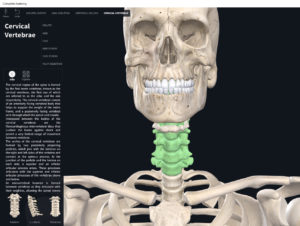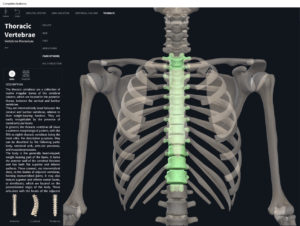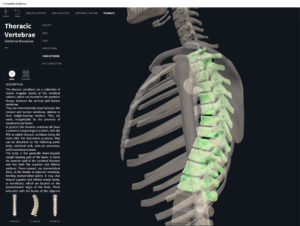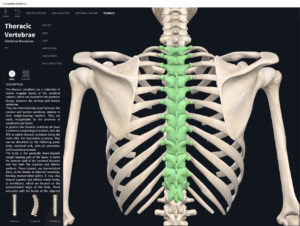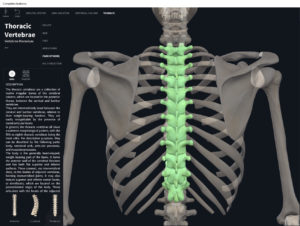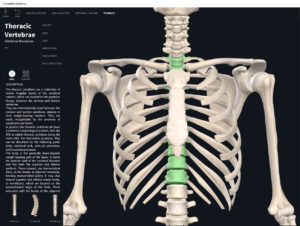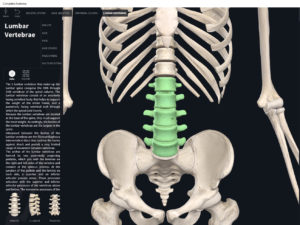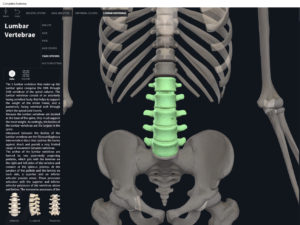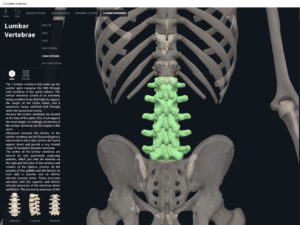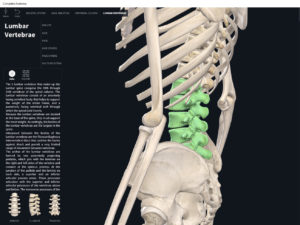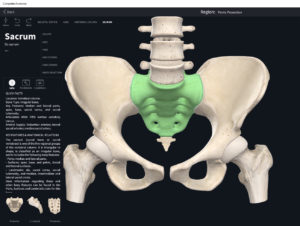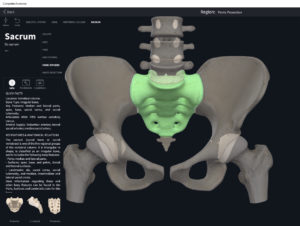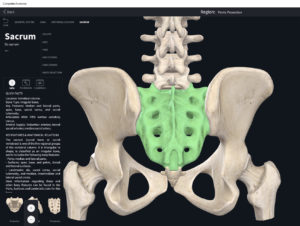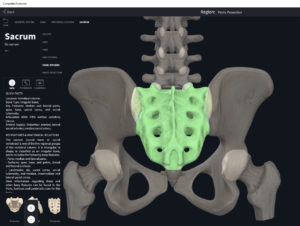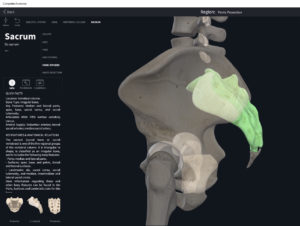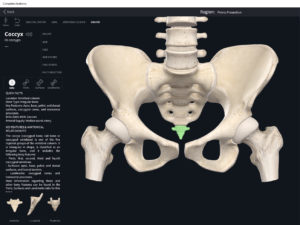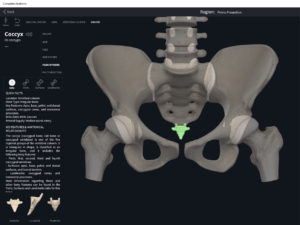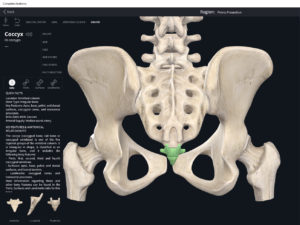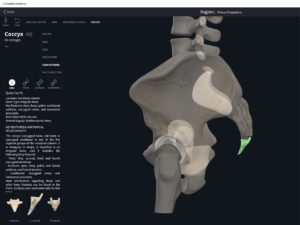Anatomy & Physiology: Bones—Vertebral Column.
Structure.
- Cervical vertebrae: C1 (atlas), C2 (axis), C3-C7. (Remember breakfast at 7). C7 known as the vertebral prominens as it distinctly protrudes at the base of the neck at the transition to the thoracic vertebrae.
- Thorax vertebrae: T1-T12. (Remember lunch at noon, 12).
- Lumbar vertebrae: L1-L5. (Remember dinner at 5).
- Sacrum: S1-S5, 5 fused vertebrae.
- Coccyx: 4 fused coccygeal vertebrae. “Coccyx” the cuckoo bird.
- Concave “caving in”. Convex “bulging outward”.
- Intervertebral discs: between the vertebrae.
- Annulus fibrosus: outer fibrous ring made of fibrocartilage.
- Nucleus pulposus: inner part of disk that is soft, pulpy, and elastic.
- Common structures of the vertebrae are: vertebral body, vertebral arch, and processes.
- Vertebral arch: when looking top-down (bird’s eye view) onto a “generic” vertebra, the rounded mass anteriorly is the “body” and “everything else” is the “arch”.
- The pedicles (2 per vertebrate) are the short, stumpy “feet” that connect the rest of the arch to the body. You can imagine them as trunks.
- The vertebral foramen is the hole between the arch and body for the spinal cord to pass through. It’s sometimes called the spinal canal in the vernacular. The vertebral foramen contains: spinal cord, adipose, areolar connective tissue, and blood vessels.
- Intervertebral foramen is the space or “hole” that is formed when the vertebrae are stacked together. Each intervertebral foramen allows for a single spinal nerve to pass through.
- The spinous process is the most significant posterior projection.
- Lamina: located on either side of the spinous process is like a “roof” supporting and protecting the spinal cord.
- Processes: 7 projections called processes originate from the vertebral arch.
- Transverse process (x2): it is the projection between the pedicle and lamina. Attachment points for muscles.
- Spinous process (x1): the most significant posterior projection. Forms the highest point in the arch. Attachment point for muscles.
- Superior articular processes (x2): between the pedicle and transverse process, lies a slight projection with a concave “seat”, the facet. The facet of the superior process articulates with the inferior process of the vertebrate above. The facet are the articulating surfaces and are covered in hyaline cartalige.
- Inferior articular processes (x2): located on the underside of the vertebra articulate with the superior articular processes on the vertebra below.
Function.
Clinical Significance.
References
Biel, A. (2015). Trail guide to the body: A hands-on guide to locating muscles, bones and more.
Cedars-Sinai. (2018). Vertebrae of the spine. Retrieved from https://www.cedars-sinai.org/health-library/diseases-and-conditions/v/vertebrae-of-the-spine.html
Jenkins, G., & Tortora, G. J. (2012). Anatomy and Physiology: From Science to Life, 3rd Edition International Stu. John Wiley & Sons.
Muscolino, J. E. (2017). The muscular system manual: The skeletal muscles of the human body.




